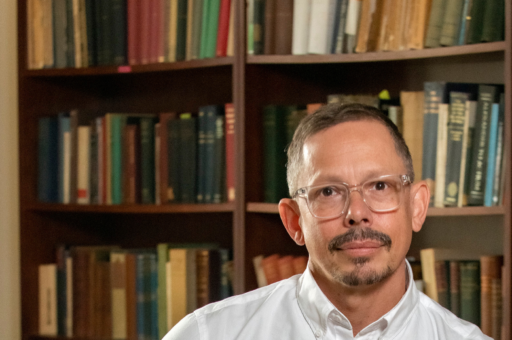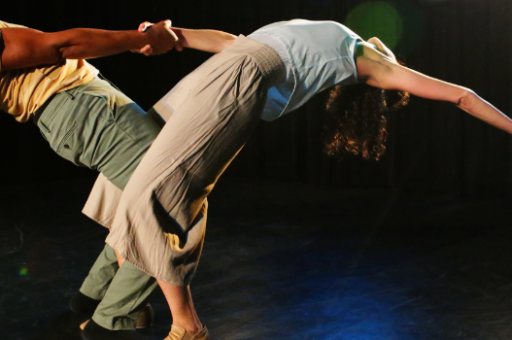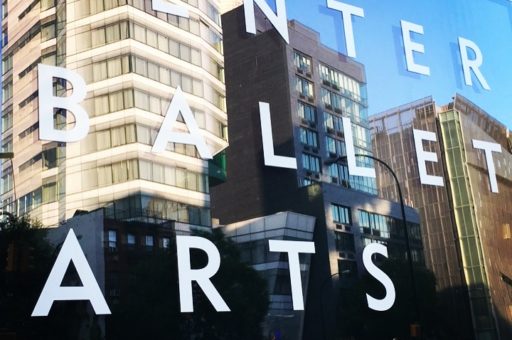Christopher Wood (CBA ’17) is Professor and Chair of the German Department at New York University. His research and writing addresses European art and culture from the fourteenth to the twentieth centuries. Wood has also taught at Yale University, and as a visitor at the University of California at Berkeley, Vassar College, and the Hebrew University, Jerusalem. He has been a fellow at the Society of Fellows, Harvard University; the American Academy in Rome; the American Academy in Berlin; the Institute for Advanced Study, Princeton; and the Internationales Forschungszentrum für Kulturwissenschaften, Vienna. In 2002 he was awarded a John Simon Guggenheim Fellowship and he is a Fellow of the American Academy of Arts and Sciences.
For more about Wood’s CBA Fellowship, visit his fellow page.
What were you working on before your fellowship? What brought you to CBA?
I have been working on a range of projects including a history of the discipline of art history; a study of the introduction of donor portraits into sacred scenes in late medieval and early Renaissance painting (this is actually related in my mind to my interest in dance: both involve making art out of real bodies as opposed to making art out of signs); and various studies around the problem of realism in art and literature from the late middle ages to the 19th century, including the problem of the vernacular arts.
I became absorbed by dance several years ago when it struck me that dance, both historical and contemporary, might yield new answers to the questions I have been asking about the visual arts and literature: what happens when fictional constructs are invaded by fragments of reality? Is an artwork threatened by a human subject, which always carries an excess of meaning? Does the human figure, raising at least the possibility of real and unbounded subjecthood, destabilize the artificial order achieved by aesthetic texts? A study of Aby Warburg and his reorientation of art history around the image in motion led to research on Nijinsky’s Jeux (here I relied on Millicent Hodson’s [CBA ‘17] scholarship!). A couple of years ago I co-taught (with a theater historian) a graduate seminar on Theories of Acting. Our readings and discussions were relevant to the theory and history of dance as well.
Dance studies seem to me an opportunity because the field of dance history is relatively isolated from other fields. So I began shifting my interest in dance from that of a consumer of culture to that of a scholar.
I became aware of CBA not long after I arrived at NYU in 2014 and immediately hoped I could have a closer connection. I am very grateful for the fall 2017 fellowship.
Please briefly describe your CBA Fellowship project. What is the problem you are trying to solve?
The immediate preparation for my fellowship was a project I undertook on the meaning of dance and dancers in J. W. Goethe’s pioneering Bildungsroman Wilhelm Meisters Lehrjahre (1795). I was struck by the many episodes involving dance in the novel. In an article published last year in the journal ELH (vol. 84, 2017) I developed the thesis that Goethe used dance and dancers to expound a countermodel to classical aesthetics. This was his indirect way of theorizing his own book, which did not comply with traditional concepts and genres of literature. In producing artworks coextensive with the body itself, dancers (solo and partnered dancers especially—once dancers are organized into patterned groups it is different) propose an alternative to the semantically homogeneous classical or neoclassical aesthetic text (be it masque, painting, or poem). The classical artwork subordinates figures to the overall composition. The figure generates meaning against a ground. The dancer, who in Goethe’s account is always a more or less vernacular dancer, frees herself from the ground and defies aesthetic as well as social convention. Her real body and real self introduce subaesthetic elements into art.
This study led me to Antonio Canova who was in these very years attempting something equally impossible: to harness the pure vitality of the solo dancer within the classical medium par excellence, free-standing sculpture in marble. Canova’s intuition was that the European cultural investment in oil painting since the Renaissance, especially the prestigious, complex compositions favored by the painters of historical, mythological, and Biblical subjects, entailed an abandonment of the main aim of ancient Greek and Roman art, namely to create powerful impressions of life itself, above all by populating our world with sculpted bodies (including the costumed bodies of dance and theater). Here Canova was picking up clues left by J. J. Winckelmann, the historian of ancient art.
Why are you drawn to the work of Antonio Canova?
Canova is irresistible because he was so wildly popular and highly esteemed in his own lifetime, and exerted such an influence on 19th-century art, and yet—is now barely intelligible. It is impossible to perceive Canova through the screen of Modernism. His aspiration to ideality and his confidence in the centrality of the youthful, well-formed body to art did not survive the overall commitment to experiential reality and to realism shared by virtually all leading tendencies in art since the mid-19th century. Canova (it is no different with Thorvaldsen) poses the puzzle of puzzles because to grasp his art would be to grasp what is missing in the realist, seemingly irreversible consensus. (Not that I want to reverse it—I believe in realism. But I want to know what happened to the aspiration to ideality, how it has been redistributed in modern reality.)
How did Canova’s artistic perspective differ from that of his predecessors?
Very subtle was his introduction of a vernacular, even common note into his dancers. Not so much the painted figures on black ground, his exercises of 1797 undertaken to purify his concept of the figure-in-motion; these were keyed to Pompeii; though are not very archeological, in fact. But Canova’s statues of single dancers, which strive for a “middle style,” neither high nor low, but rather somewhere off to the side, in a demi-monde, are impossible to mistake for classical works. Unless one were to suppose that Canova was thinking about Hellenistic sculpture with its broad range of subject matters, even to the point of realism. This would prompt a re-reading of Winckelmann from a pro-Hellenistic point of view.
Could you describe the relationship between Canova and Blasis?
Overall I would say that the two of them were expounding a view of art designed to sustain the Winckelmannian project. By this I mean exactly that favoring of the isolated figure and impatience with composition, and that willingness to take the risk of inviting the real into the artwork, that I mentioned above in answers 1 & 2. That is the historical meaning of both ballet and figural sculpture in the 19th century, and perhaps even in the 20th century.
This semester I read the writings of Blasis, which were constantly surprising though also a little disappointing. He is not a significant theorist. Still, his writings seem to reveal underlying structures and attitudes. He is so far out out of tune with an emergent modernist (read: Baudelairean) mentality that for that very reason he is interesting. His comments on the “middle” manner, on the other hand, which may or may not have been guided by Canova, would seem to open up some space for ballet and for parallel art forms in other media that is no longer neoclassical and yet not modernist either. A semi-exposed symbolic space.
Have you made any unexpected discoveries during your time at CBA? What were they, and how did they influence your work?
I did not anticipate finding, or had not noticed before, the discourse on the “middle” mode in Blasis, which he connects with Canova. This seems to me a rich vein to mine, and one that connects in fact with Goethe and the adventures pictured in the Bildungsroman.
Apart from that, I read in the secondary literature: histories of 18th-century and 19th –century ballet.
The most important aspect of my fellowship was the contact with the other fellows and the many performances and workshops we experienced together. I learned so much from being around specialists and performers with their inimitable inside knowledge. It changes everything for me—without this contact I would be completely disoriented among the historical traces of the dance arts.
How do you see your project evolving after the fellowship concludes?
I will develop an article-length study of Canova and dance. Where that will lead it is hard to say. Projects take on their contours and dimensions over time. At some point a book on late 18th-century/early 19th-century art/arts might emerge. My immediate relevant project is a special issue of the journal Res, co-edited with Marika Knowles, devoted to the concept of the parade, or sideshow. The idea is to prompt our authors to rethink the intertwined histories of high and low art, or art and entertainment, by shifting the focus from compositions to isolated, even alienated figures. The 19th-century Parisian sideshows luring spectators into the circuses and dance halls are a paradigm. Read retrospectively, the history of painting since the Renaissance was inhabited by figures it could not assimilate.




